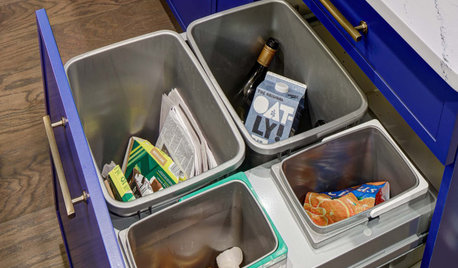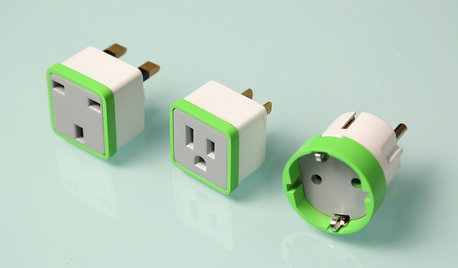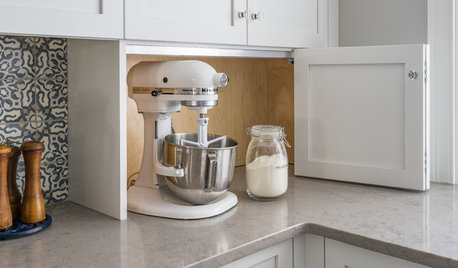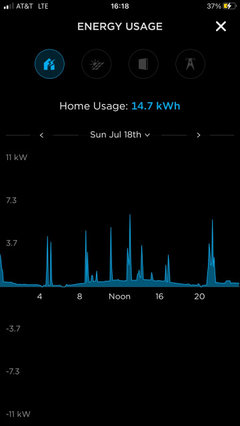Recirculation pump wastes a huge amount of electricity
stephine2
2 years ago
Featured Answer
Sort by:Oldest
Comments (55)
just_janni
2 years agoRelated Discussions
huge amount of dirt dumped into pond!!
Comments (2)Oh my. I read up on them since I never heard of them before and if you are in California I think you are really in trouble. A quarter acre per tunnel? If you can't poison, shoot or trap them it sounds like you might be able to at least discourage them, but you better check the authorities first. How about an electric fence?...See MoreSpin off RE: water heater and recirculating pump
Comments (17)There are different types of heat tracing. I used constant wattage in my system, and can't comment on other types. Aptly named, it produces heat with no limit, thus the need for control(t-stat)...exactly like your water heater. Memory isn't good, so I can't give prices (my system is over 10 years old)but IIRC, there is a minimum footage purchase (10' maybe)and then per/ft. cost. Insulation cost is a wash- any system should be insulated. My system is designed to maintain a temp. just under the heater setpoint. The longer the insulation maintains static condition the less power used. Cost for my system with expensive, quality pipe insulation was well under a circ. pump. Installation requires no plumbing, but does require minor electrical skills if power isn't nearby. Installing the trace and insulating will take longer than installing a pump (without return line- which could extend time considerably), but is not skilled work, simply conscientious. My situation has 20' of trace,@5W/ft. At the old kWh rate (just increased), operating costs were penny/hour. Note the system does not operate continuously. Circ. pumps consume power starting at ~400W, 4x my consumption, though of course they are intermittent duty too....See Morequestion about recirculating hot water pump
Comments (12)You could have one installed in the farthest bathroom with a remote to turn it on. It turns off when hot water is sensed at the pump. Chillepepper is one brand ( http://www.chilipepperapp.com/tcs.htm) I have the pump installed at the heater. It has a timer but I have it turned on all the time. But I have it plugged into a X10 module. ( http://www.x10.com/automation/index.html -- but there are other X10 suppliers) I have a X10 controller in the master bath and in the kitchen that turn the pump on and off when the appropriate button is pushed. The down side is that one needs to know how long it takes to get hot water to the various locations. In my case it takes 1 minute for the master bath, 5 minutes for the kitchen and 8 minutes for the back bath....See Morehot water recirculation pump sound?
Comments (20)@bthouse same problem. I have an ecocirc B&G e3 (basically same Laing one as OP...now owned by Xylem). It is the aquastat model and registers as only using 8W but the piping hums for a minute every time it runs about every 15 minutes. It mainly resonates in the small L bend of pipes 2 feet from the pump to the y inlet of the tank. id like to try a different pump to see if that fixes it but potentially more money down the drain if it does the same thing. I was looking at something like the grundfos alpha2 which is also an ecm. Taco also comes up as fairly quiet but who knows. A specific machine may just be operating at just the right frequency in parallel with the pipe so hopefully a different model would fix it? @baw0123 did you ever replace the pump or change the pipe bends? I also have a bend right before the pump inlet but about a foot to a bend that goes up to the tank. I thought it could be cavitation or water turbulence (those pipes seem noisiest). But since you have the same pump maybe it’s just the pump causing resonance (Also using 1/2” copper). I have a spring valve right after the pump outlet but I don’t really think swing or spring should matter for the check valve. I’ve also bled air out and cleaned the adjacent pipe and the pump itself of scale but the low frequency hum still is there....See MoreJake The Wonderdog
2 years agolast modified: 2 years agoDavid Cary
2 years agostephine2
2 years agostephine2
2 years agostephine2
2 years agoStax
2 years agochisue
2 years agostephine2
2 years agoJake The Wonderdog
2 years agolast modified: 2 years agostephine2
2 years agoJake The Wonderdog
2 years agoJj J
2 years agoStax
2 years agoStax
2 years agolast modified: 2 years agostephine2
2 years agoStax
2 years agoJake The Wonderdog
2 years agolast modified: 2 years agoJj J
2 years agopima74
2 years agostephine2
2 years agoopaone
2 years agolast modified: 2 years agostephine2
2 years agostephine2
2 years agopima74
2 years agoDavid Cary
2 years agolast modified: 2 years agostephine2
2 years agostephine2
2 years agoStax
2 years agostephine2
2 years agoDavid Cary
2 years agolast modified: 2 years agoJulie K
2 years agoJake The Wonderdog
2 years agolast modified: 2 years agostephine2
2 years agostephine2
2 years agoDavid Cary
2 years agolast modified: 2 years agostephine2
2 years agopippipal
2 years agoMichael Christie
last yearDavid Cary
last yearopaone
last yearlast modified: last yearkaseki
last yearSteph Noyb
last yearopaone
last yearopaone
last yearlast modified: last yearRNmomof2 zone 5
last yearDavid Cary
last yearlast modified: last yearHU-279074282
last yearSteph Noyb
last year
Related Stories

MOST POPULAREasy Green: 23 Ways to Reduce Waste at Home
Pick from this plethora of earth-friendly ideas to send less to the landfill and keep more money in your pocket
Full Story
KITCHEN STORAGEHow to Get Your Pullout Waste and Recycling Cabinets Right
Personalize your kitchen waste storage with the best bin configuration and pullout system
Full Story
ACCESSORIESEasy Green: Cut Electricity Use With 15 Unplugged Home Devices
Crank up the energy savings, courtesy of household items that come into power the old-fashioned way: manually
Full Story
DECORATING GUIDESHouzz Tour: Couple Pares Down and Pumps Up the Style
A big transition from a large suburban house to a 1,200-square-foot urban condo is eased by good design
Full Story
HOME TECHPlug Into Home Power Monitors That Pay for Themselves
Stop throwing away money on wasted electricity with help from new monitors that work with your phone or computer
Full Story
EARTH DAYGrow a Beautiful Garden With Ecofriendly Greywater
Reducing home water waste means lower bills and a healthier planet. Here's how to set up a greywater home irrigation system that can help
Full Story
GREEN BUILDINGGoing Solar at Home: Solar Panel Basics
Save money on electricity and reduce your carbon footprint by installing photovoltaic panels. This guide will help you get started
Full Story
KITCHEN DESIGNHow to Choose and Use Ecofriendly Kitchen Appliances
Inefficient kitchen appliances waste energy and money. Here's how to pick and use appliances wisely
Full Story
LIFEHow to Prepare for and Live With a Power Outage
When electricity loss puts food, water and heat in jeopardy, don't be in the dark about how to stay as safe and comfortable as possible
Full Story
KITCHEN STORAGEWhere to Stash the Stand Mixer in Your Kitchen
Stand mixers aren’t huge, but they’re heavy. See storage ideas for keeping them accessible and easy to use
Full Story






opaone